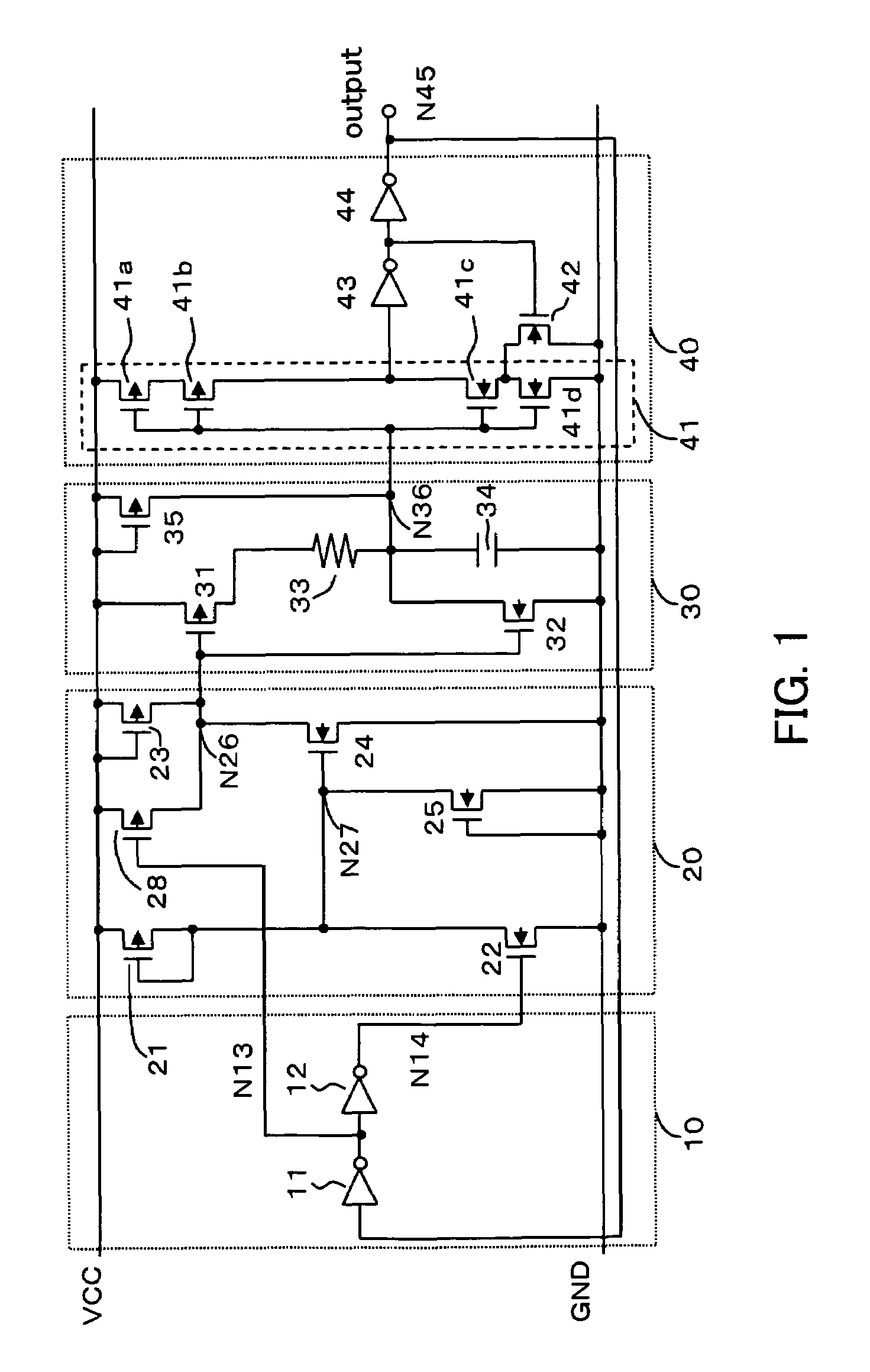Power-on reset circuit
a power-on reset and circuit technology, applied in the direction of pulse automatic control, electronic switching, pulse technique, etc., can solve the problems of unstable reset pulse, ungenerated reset pulse, disabling circuit to normally operate, etc., and achieve low power consumption and avoid unnecessary power consumption.
- Summary
- Abstract
- Description
- Claims
- Application Information
AI Technical Summary
Benefits of technology
Problems solved by technology
Method used
Image
Examples
embodiment
Preferred Embodiment
[0025]Referring to the accompanying drawings, an embodiment of a POR circuit of the invention (which hereafter will also be referred to as an “inventive circuit”) will be described hereinbelow.
[0026]Referring to FIG. 1, the inventive circuit is composed of a power supply voltage detection circuit 20, a capacitor charge / discharge circuit 30, a reset pulse generation circuit 40, and a power reduction circuit 10.
[0027]The power supply voltage detection circuit 20 detects a rise of a power supply voltage Vcc to a predetermined voltage V or higher and then causes a logical level of a first internal node N26 to change from a high level (first level) to a low level (second level). More specifically, as shown in FIG. 1, the power supply voltage detection circuit 20 is composed of three P-type MOSFETs (each of which hereinbelow will be referred to as a “PMOS”) 21, 23, and 28 and three N-type MOSFETs (each of which hereinbelow will be referred to as a “NMOS”) 22, 24, and 2...
PUM
 Login to View More
Login to View More Abstract
Description
Claims
Application Information
 Login to View More
Login to View More - R&D
- Intellectual Property
- Life Sciences
- Materials
- Tech Scout
- Unparalleled Data Quality
- Higher Quality Content
- 60% Fewer Hallucinations
Browse by: Latest US Patents, China's latest patents, Technical Efficacy Thesaurus, Application Domain, Technology Topic, Popular Technical Reports.
© 2025 PatSnap. All rights reserved.Legal|Privacy policy|Modern Slavery Act Transparency Statement|Sitemap|About US| Contact US: help@patsnap.com



